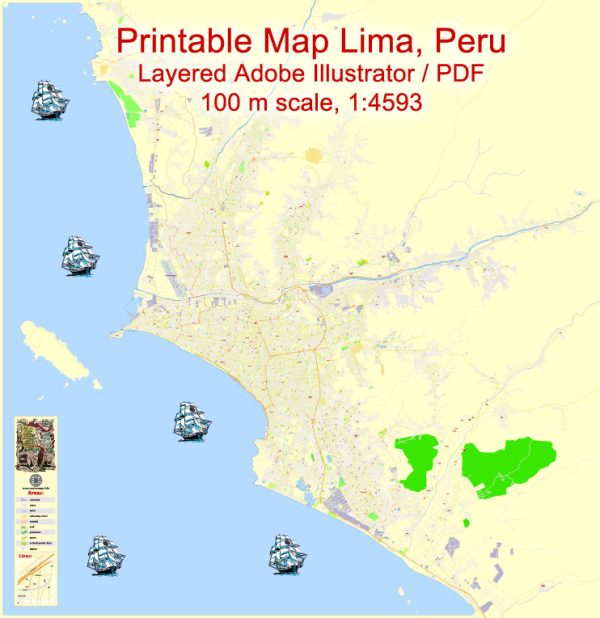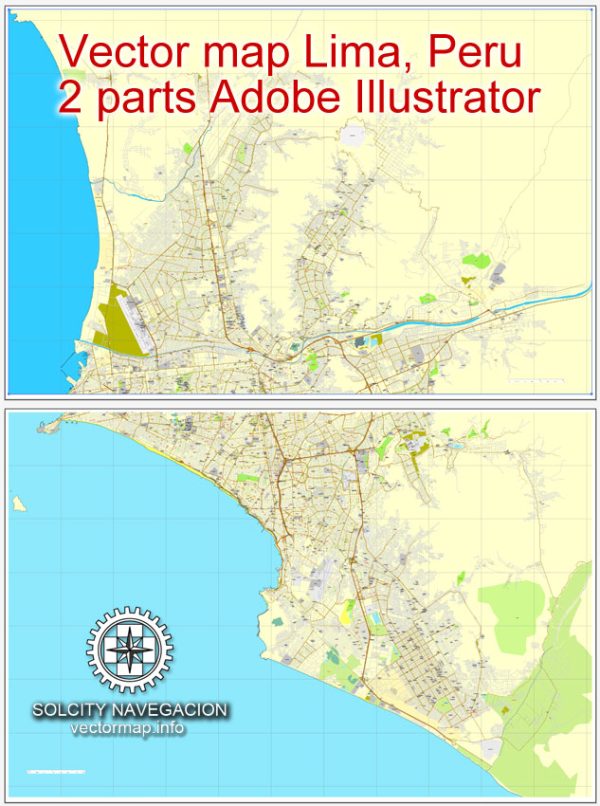Lima, the capital and largest city of Peru, boasts a rich and diverse architectural heritage that reflects the city’s long history and cultural influences. The architecture of Lima encompasses a wide range of styles and periods, from pre-Columbian cultures to Spanish colonial, neoclassical, and contemporary architectural trends. Here’s a brief description of some of the key architectural features and styles in Lima, Peru:
- Pre-Columbian Architecture: Before the arrival of the Spanish conquistadors, the region that is now Lima was inhabited by various pre-Columbian cultures, including the Lima culture and the Inca civilization. While few remnants of their architectural heritage remain in the modern city, you can still find some archaeological sites and museums that showcase their construction techniques and artistic expressions.
- Spanish Colonial Architecture: Lima is renowned for its well-preserved Spanish colonial architecture. The historic city center is a UNESCO World Heritage Site, and it features numerous buildings from the colonial era. Notable examples include the Cathedral of Lima, the Church and Convent of San Francisco, and the Torre Tagle Palace. These structures often exhibit baroque and neoclassical elements, with intricate facades, ornate balconies, and religious iconography.
- Balconies of Lima: A distinctive feature of Lima’s colonial architecture is the wooden balconies that adorn many buildings. These balconies are beautifully carved and decorated, adding to the city’s charm. The balconies of Lima can be found throughout the historic center, particularly along streets like Jirón de la Unión and Calle Capón.
- Neo-Baroque and Neo-Renaissance: In the 19th and early 20th centuries, Lima saw the emergence of neoclassical, neo-baroque, and neo-renaissance architectural styles. Prominent examples of this era include the Government Palace, the Grand National Theater, and the Church of La Merced. These buildings often exhibit grand facades, detailed sculptures, and opulent interiors.
- Art Deco and Art Nouveau: The early 20th century brought with it the influence of art deco and art nouveau styles in Lima’s architecture. Buildings such as the Gran Hotel Bolívar and the Palacio de la Exposición showcase these decorative and innovative design trends.
- Modern and Contemporary Architecture: In more recent years, Lima has seen the development of modern and contemporary architectural landmarks. This includes skyscrapers, government buildings, and innovative urban design projects. The district of Miraflores is known for its modern architecture, as well as its proximity to the stunning cliffs overlooking the Pacific Ocean.
- Housing and Urban Development: Lima is a city with a diverse range of housing options, from colonial-era houses to modern condominiums. The city’s urban development has led to the construction of high-rise apartment buildings, reflecting its status as a growing metropolis.
Lima’s architectural landscape is a testament to the city’s historical evolution and its blend of cultures and influences. Visitors to Lima can explore this architectural diversity while experiencing the rich history and culture of Peru’s capital.



 Author: Kirill Shrayber, Ph.D.
Author: Kirill Shrayber, Ph.D.